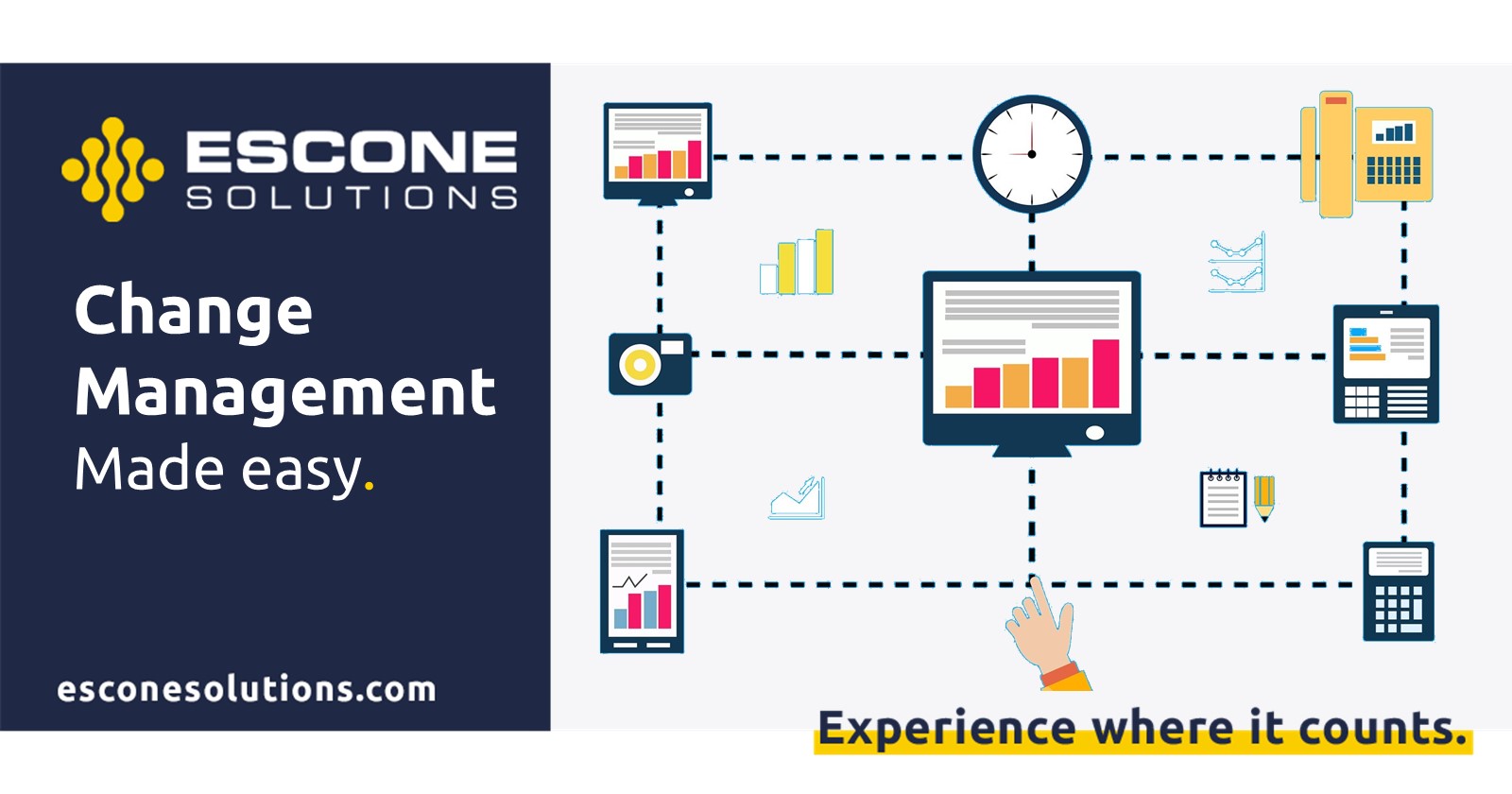Drivers for change within a business can come from a wide range of economic and socio-economic factors. However, when it comes to implementing change in any organisation, many challenges are faced as new dynamics need to be considered when adapting to a new way of working.
By using effective change management processes, this time of change can be eased to ensure efficiency and clarity to help the business survive and where possible flourish.
You might be asking, what even is change management? Well, change management is simply the process, systems and techniques used by an organisation to move from their current state to a future desirable position.
There are many change management models that can be applied, but here at Escone Solutions, we believe and follow four key steps to ensure we effectively support our clients through their change management programme.
Audit & Plan
Firstly, you need to understand the lay of the land with an audit, starting with an internal deep dive. Being fully aware of the ‘situation’ including structures, processes, procedures and systems and software that need to change helps to identify potential risks of implementing change. Once explored, a robust change management strategy is developed with a clear time critical plan to capture and handle all risks as well as opportunities for improvement.
But your auditing should not stop there. Continuous audits throughout plan implementation is important. If something were to go wrong, those ongoing checks will ensure you can easily identify the root cause and take remedial action.
Firstly, we recommend taking a step back and looking at where the change originated from and what the objective and intended outcomes are before analysing all areas potentially impacted by the change. You should also consider:
- System Change
- 3rd party systems that feed in or are fed from the system
- Software vendor involvement
- Teams likely to be impacted
Taking everything into consideration you can create an outcome detailed audit scope with all intended changes mapped out.
Rollback Plan
Having a rollback plan is essentially making sure the “Ctrl Z” button is at the ready should you need to restore your systems to their original state. Chance paranoia is common, so having that peace of mind that things can easily be ‘switched back’ to a known-good status, will help ease the transition.
To create your rollback plan, we recommend documenting each step during the process of change. This will also help clarify the impact your new process will have on your other systems and highlight any chances to amend their processes too.
At Escone, backups are vital, and we recommend they are vital for you too. Whether it be a full database of backups or snippets for configuration settings, we always have backup. It is also not a bad idea to have a backup of the backup for “just in case” occasions!
Before rollout, we agree a cut off point for the business where a rollback plan is no longer feasible. This is to ensure that there is no loss of data. After the cut off, the solution will be to fix any issues as rolling back will undoubtedly have a bigger impact on the business.
Data Integrity
Imagine if all your data was deleted or altered and there was no way of finding out how it happened? That is why data integrity is fundamental. You need to ensure all your data is protected against improper maintenance and modification, so your ‘change’ does not affect existing data. To ensure you have full data integrity, your data should only be accessed by those authorised to access the system, no exceptions.
Our biggest recommendation is to ‘sanity check’ data changes and ensure extensive testing is carried out. Where possible, give the testing team a mirror of the live system as this allows testing to be done on the same data and users are more familiar.
Remember to schedule downtime to ensure that users don’t do anything during the change that could corrupt or impact data integrity. Where possible, the live environment should be unavailable to users during a change.
User confidence
You need user buy-in to change. These are the people following processes and using your systems so getting them involved in your communication is key. By implementing an uncontrolled change that employees are not aware of and it having a negative impact on system process, users will refuse to adopt the wider benefits of the business system and could ultimately see them fail. That’s why it’s important to communicate to your team throughout the change management cycle and provide training where necessary to ensure they see the full benefits of the new systems and processes you are putting in place.
Our final tip is never forget your end users! They are often ignored but by engaging your staff and stakeholders at every stage, the change will not shock or unsettle users meaning go live is smooth as they have been part of the full journey.
Want to discuss your change management requirements?
Please don’t hesitate to get in touch.



